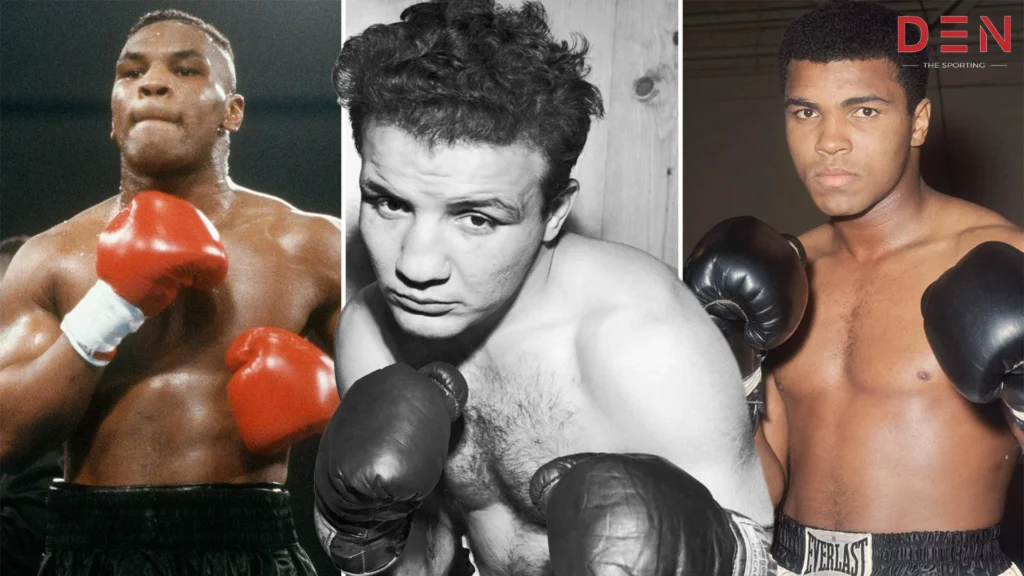
The path to becoming a skilled and successful boxer requires dedication, discipline, and a well-structured Training Routines for Boxers. This guide delves into the essential components of a boxer’s training program, providing a roadmap for beginners and experienced fighters alike.
Suggested Read: Legendary Boxers and Their Impact on the Sport
Building a Strong Foundation: The Pillars of Boxing Training
A solid Training Routines for Boxers rests upon four fundamental pillars:
Conditioning:
This encompasses cardiovascular and muscular endurance training, crucial for maintaining peak performance throughout a fight. Activities like running, jumping rope, and circuit training are essential elements.
Strength Training:
Building muscle strength and power is vital for delivering powerful punches and withstanding your opponent’s attacks. Weight training exercises targeting core, legs, and upper body muscles are key.
Technical Skills Development:
Mastering proper punching mechanics, footwork, and defensive maneuvers forms the cornerstone of effective boxing. Shadowboxing, pad work, and drills with a coach are crucial for refining these skills.
Mental Toughness:
The mental demands of boxing are just as important as the physical ones. Developing mental fortitude through visualization, positive self-talk, and stress management techniques is essential for success in the ring.
While each boxer’s training program can vary depending on individual goals, experience level, and competition schedule, a well-rounded routine typically incorporates elements from all these pillars.
Training Routines for Boxers: A Week in the Life of a Boxer
Here’s a glimpse into what a typical week might look like for a boxer at an intermediate level:
- Monday: Focus on conditioning with a long-distance run, followed by jump rope and agility drills.
- Tuesday: Dedicate the day to strength training, targeting major muscle groups with exercises like squats, lunges, push-ups, and pull-ups.
- Wednesday: Refine technical skills through shadowboxing drills, practicing various punches, footwork patterns, and defensive maneuvers.
- Thursday: Prioritize recovery with light cardio and stretching exercises, allowing the body to rest and rebuild.
- Friday: Return to conditioning with high-intensity interval training (HIIT) workouts, alternating periods of intense activity with rest.
- Saturday: Engage in pad work with a coach, focusing on specific combinations, counter-punching, and maintaining proper form.
- Sunday: Take a well-deserved rest day to allow your body to recover completely and prevent injuries.
This example can be adjusted based on individual needs and training goals. It’s important to consult with a qualified boxing coach who can assess your fitness level, tailor a program to your specific needs, and ensure proper technique to prevent injuries.
Beyond the Basics: Advanced Training Routines for Boxers
As boxers progress in their training journey, they might incorporate additional elements to further enhance their performance:
Plyometric Exercises:
Explosive exercises like jump squats and box jumps improve power and explosiveness, translating into more powerful punches and quicker movements.
Speed and Agility Training:
Practicing drills and exercises that enhance speed, reaction time, and coordination can give you an edge in the ring.
Sparring:
Controlled sparring sessions with partners under the guidance of a coach simulate the physical and mental demands of a real fight, providing valuable experience and honing skills under pressure.
Nutritional Guidance:
Maintaining a balanced and healthy diet, tailored to your training intensity and competition schedule, fuels your body for optimal performance and recovery.
Remember, consistency and progressive overload (gradually increasing training intensity) are key to maximizing results and minimizing the risk of overtraining. It’s crucial to listen to your body, prioritize recovery, and adjust your training plan as needed.
Also Read: Essential Boxing Techniques for Beginners
FAQs
Boxers typically train with a mix of activities, including:
Technical Skills: Punches, footwork, defense, and combinations practiced with a coach or shadowboxing.
Cardio: Running, jumping rope, and other activities to build endurance for the entire fight.
Strength Training: Exercises to build muscle mass, power, and core strength.
The frequency depends on your experience level and goals. Beginners might start with 2-3 sessions per week, while experienced boxers train more frequently. It’s important to include rest days for recovery.
Absolutely! Maintaining a healthy diet, getting enough sleep, and practicing proper stretching and mobility exercises contribute significantly to your boxing development.
StrongLifts 5×5 (https://stronglifts.com/stronglifts-5×5/) is a website focused on strength training routines, but they have a great article on how to get started with boxing conditioning. This can be a great starting point for any boxer looking to build a strong foundation.
Summing it Up
Building a successful Training Routines for Boxers requires a multi-faceted approach, encompassing conditioning, strength training, skill development, and mental toughness. Delving into Training Routines for Boxers with this all-encompassing manual, laying the groundwork for tailoring a regimen that aligns with your specific aspirations and requirements. Nonetheless, keep in mind the significance of consulting a seasoned boxing coach to guarantee precision in technique, safety precautions, and the optimization of your capabilities within the ring. Armed with commitment, resolve, and a meticulously crafted training regime, you can initiate your expedition into the realm of boxing, aiming for triumphs not only within the squared circle but also in the broader spectrum of life’s endeavors.
David Conn, a distinguished sports journalist with 20 years of experience, is a trusted voice in sports reporting. Known for his precision in dissecting NFL plays, analyzing NHL strategies, exploring soccer finesse, and diving into basketball tactics, Conn brings an unwavering commitment to storytelling. Join us as we explore the dynamic world of sports through Conn’s nuanced understanding of athletes, strategies, and narratives in NFL, NHL, football, soccer, basketball, and more.



